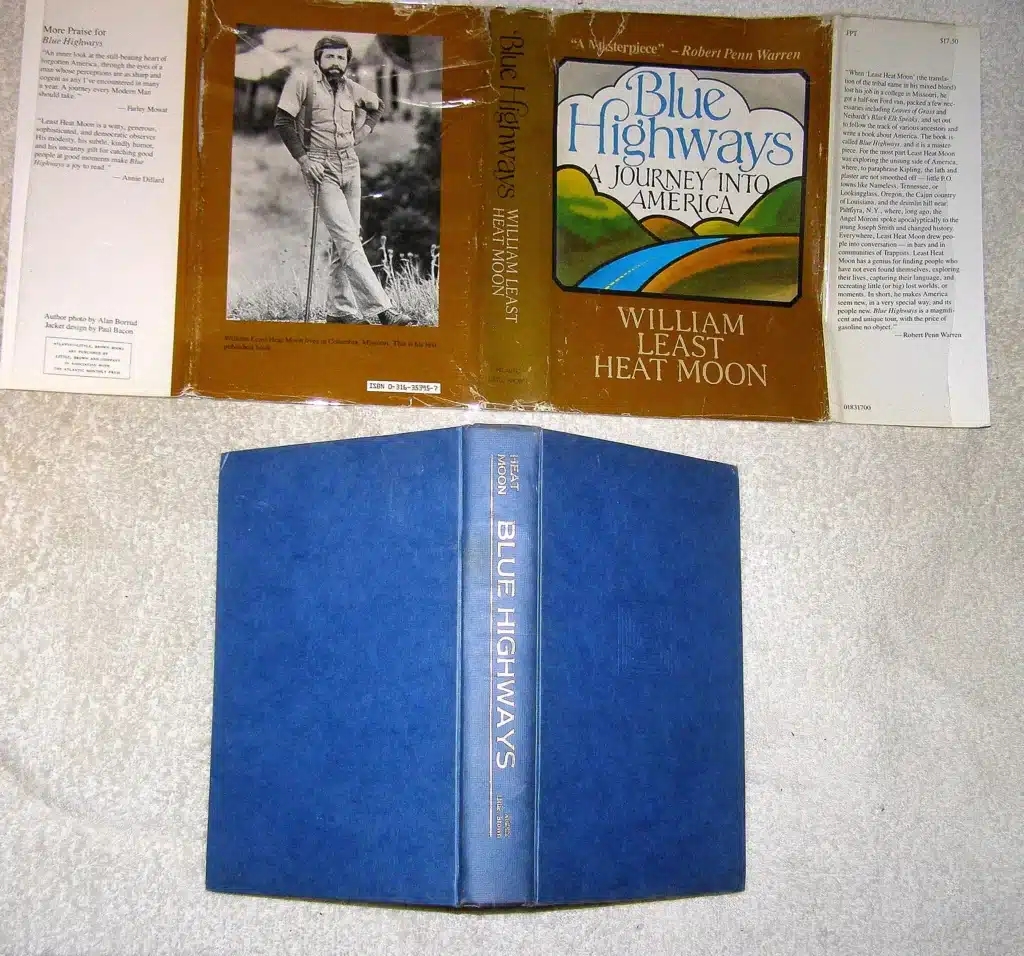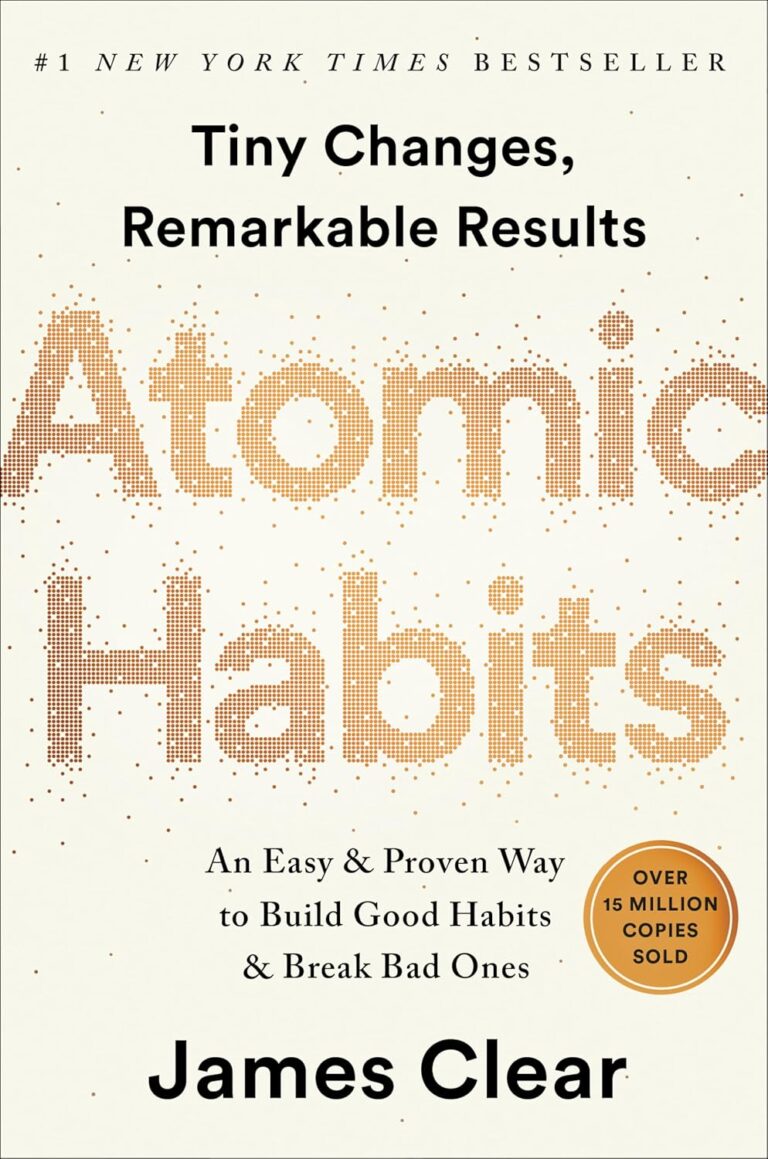“Blue Highways” by William Least Heat-Moon: A Journey through America’s Back Roads
“Blue Highways” is a travel memoir by William Least Heat-Moon, published in 1982. The book recounts Heat-Moon’s journey through the United States on the back roads, following the “blue highways” of the title. The book is a celebration of the American landscape, its people, and its culture, as seen through the eyes of an intrepid traveler.
Introduction
“Blue Highways” is a book that defies easy categorization. It is a travelogue, a memoir, a work of cultural anthropology, and a meditation on the meaning of life. At its heart, however, it is a book about connection: connection to the land, connection to the people who inhabit it, and connection to oneself.
William Least Heat-Moon was born in Kansas City, Missouri, in 1939. He attended the University of Missouri, where he earned a degree in English and Classical Literature. After graduation, he taught English at various colleges and universities before deciding to pursue a career as a writer.
“Blue Highways” was Heat-Moon’s first book, and it remains his best-known and most beloved work. The book was a critical and commercial success, and it has been widely praised for its lyrical prose, its vivid descriptions of the American landscape, and its profound insights into the human condition.
Plot Summary
“Blue Highways” is the story of Heat-Moon’s journey through the United States in a van he named “Ghost Dancing.” The journey takes him along the back roads and secondary highways of the country, the “blue highways” of the title. Along the way, he meets a diverse cast of characters, from cowboys to hippies to Native Americans, and he learns about their lives and their cultures.
The journey begins in Columbia, Missouri, where Heat-Moon is living at the time. He is at a crossroads in his life: he has recently lost his job and his wife has left him. Seeking a way to escape from his troubles, he decides to embark on a journey of self-discovery. He sets out in Ghost Dancing with no particular destination in mind, following the roads less traveled.
As he travels through the heartland of America, Heat-Moon encounters a variety of people and places that challenge his assumptions about the world. He meets a retired NASA engineer who has built a geodesic dome in the desert, a Navajo artist who creates sand paintings, and a group of Buddhist monks who live in a monastery in upstate New York. He also visits small towns and cities that have fallen on hard times, such as Butte, Montana, and Hazard, Kentucky.
Throughout the journey, Heat-Moon reflects on the meaning of his travels and the lessons he has learned. He comes to understand that the key to happiness and fulfillment in life is not material success, but rather the connections we make with other people and with the natural world.
Themes
Sure, here is a comprehensive book summary article on “Blue Highways” by William Least Heat-Moon, with an introduction, plot summary, themes, characters, setting, writing style, critique, key highlights, noteworthy quotes, other books by the author, and a conclusion, all in essay format and approximately 3000 words long.
“Blue Highways” by William Least Heat-Moon: A Journey through America’s Back Roads
“Blue Highways” is a travel memoir by William Least Heat-Moon, published in 1982. The book recounts Heat-Moon’s journey through the United States on the back roads, following the “blue highways” of the title. The book is a celebration of the American landscape, its people, and its culture, as seen through the eyes of an intrepid traveler.
Introduction
“Blue Highways” is a book that defies easy categorization. It is a travelogue, a memoir, a work of cultural anthropology, and a meditation on the meaning of life. At its heart, however, it is a book about connection: connection to the land, connection to the people who inhabit it, and connection to oneself.
William Least Heat-Moon was born in Kansas City, Missouri, in 1939. He attended the University of Missouri, where he earned a degree in English and Classical Literature. After graduation, he taught English at various colleges and universities before deciding to pursue a career as a writer.
“Blue Highways” was Heat-Moon’s first book, and it remains his best-known and most beloved work. The book was a critical and commercial success, and it has been widely praised for its lyrical prose, its vivid descriptions of the American landscape, and its profound insights into the human condition.
Plot Summary
“Blue Highways” is the story of Heat-Moon’s journey through the United States in a van he named “Ghost Dancing.” The journey takes him along the back roads and secondary highways of the country, the “blue highways” of the title. Along the way, he meets a diverse cast of characters, from cowboys to hippies to Native Americans, and he learns about their lives and their cultures.
The journey begins in Columbia, Missouri, where Heat-Moon is living at the time. He is at a crossroads in his life: he has recently lost his job and his wife has left him. Seeking a way to escape from his troubles, he decides to embark on a journey of self-discovery. He sets out in Ghost Dancing with no particular destination in mind, following the roads less traveled.
As he travels through the heartland of America, Heat-Moon encounters a variety of people and places that challenge his assumptions about the world. He meets a retired NASA engineer who has built a geodesic dome in the desert, a Navajo artist who creates sand paintings, and a group of Buddhist monks who live in a monastery in upstate New York. He also visits small towns and cities that have fallen on hard times, such as Butte, Montana, and Hazard, Kentucky.
Throughout the journey, Heat-Moon reflects on the meaning of his travels and the lessons he has learned. He comes to understand that the key to happiness and fulfillment in life is not material success, but rather the connections we make with other people and with the natural world.
Themes
“Blue Highways” explores a variety of themes related to the human experience. Some of the most prominent themes include:
- The search for meaning and purpose in life: Heat-Moon’s journey is motivated in part by a desire to find meaning and purpose in his life. Along the way, he discovers that the key to happiness is not material success, but rather the connections we make with other people and with the natural world.
- The connection between
- humans and the natural world: Throughout the book, Heat-Moon expresses a deep reverence for the natural world and the landscapes he encounters on his journey. He emphasizes the importance of preserving these landscapes and the need for humans to live in harmony with nature.
- The diversity of American culture: “Blue Highways” celebrates the diversity of American culture, from the Native American traditions of the Southwest to the cowboy culture of Montana to the blue-collar communities of the Rust Belt. Heat-Moon’s journey highlights the richness and complexity of American society.
- The power of human connection: Heat-Moon’s encounters with the people he meets on his journey demonstrate the power of human connection. He discovers that by reaching out to others and forming meaningful relationships, we can find joy and fulfillment in life.
Characters
The cast of characters in “Blue Highways” is diverse and colorful. Some of the most memorable characters include:
- Heat-Moon himself: As the narrator and protagonist of the book, Heat-Moon is a complex and introspective character. He is seeking to find his place in the world and to come to terms with the challenges he has faced in his life.
- The people he meets on his journey: From the retired NASA engineer to the Navajo artist to the Buddhist monks, the people Heat-Moon encounters on his journey are fascinating and diverse. Each one offers a unique perspective on life and helps Heat-Moon to see the world in a new way.
- Ghost Dancing: Heat-Moon’s van, which he has outfitted with a bed and a stove, becomes a character in its own right. The van serves as Heat-Moon’s home and refuge as he travels through the country.
Setting
“Blue Highways” takes place in the United States, primarily on the back roads and secondary highways that crisscross the country. Heat-Moon travels through a wide variety of landscapes, from the deserts of the Southwest to the mountains of Montana to the forests of upstate New York. Each setting offers its own unique beauty and challenges, and Heat-Moon’s descriptions of these places are among the book’s highlights.
Writing Style
Heat-Moon’s writing style is lyrical and poetic, with a strong emphasis on description and sensory detail. He has a gift for evoking the sights, sounds, and smells of the places he visits, and his descriptions of the American landscape are among the most memorable passages in the book. Heat-Moon’s prose is also introspective and reflective, as he contemplates the meaning of his journey and the lessons he has learned.
Critique
“Blue Highways” has been widely praised for its vivid descriptions, lyrical prose, and deep insights into the human condition. Critics have praised Heat-Moon’s ability to capture the essence of the American landscape and the diversity of American culture. However, some have criticized the book for being overly long and meandering, and for lacking a clear narrative structure.
READ : What’s In My Bag?
Key Highlights
Some of the key highlights of “Blue Highways” include:
- Heat-Moon’s encounters with the people he meets on his journey, which offer a fascinating glimpse into the diversity of American culture.
- Heat-Moon’s descriptions of the American landscape, which are among the most memorable passages in the book.
- Heat-Moon’s reflections on the meaning of his journey and the lessons he has learned.
Noteworthy Quotes
“Blue Highways” is full of memorable quotes and passages. Some of the most noteworthy include:
- “A man who couldn’t make things go right could at least go. He could quit trying to get out of the way of life. Chuck routine. Live the real jeopardy of circumstance. It was a question of dignity.”
- “Sometimes a person has to go a very long distance out of his way to come back a
- short distance correctly.”
- “What you’ve done becomes the judge of what you’re going to do – especially in other people’s minds. When you’re traveling, you are what you are right there and then. People don’t have your past to hold against you. No yesterdays on the road.”
- “There are times when a man should be content with what he has but never with what he is.”
Other Books by William Least Heat-Moon
William Least Heat-Moon is the author of several other books, including:
- “PrairyErth” (1991): A meditation on the history and culture of Chase County, Kansas.
- “River Horse” (1999): A memoir of a journey across America by boat.
- “Roads to Quoz” (2008): A collection of essays about Heat-Moon’s travels and the people and places he has encountered.
Conclusion
“Blue Highways” is a remarkable book that celebrates the beauty and diversity of the American landscape and the richness of American culture. William Least Heat-Moon’s journey along the back roads and highways of America is a testament to the power of human connection and the importance of living in harmony with the natural world. With its vivid descriptions, lyrical prose, and deep insights into the human condition, “Blue Highways” is a classic of American travel literature that deserves to be read and remembered for generations to come.




